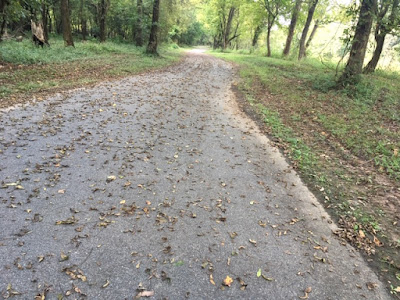In the meantime, get ready for fall riding by rounding up your long-fingered gloves, knee and arm warmers, and other cool weather bits.
Seasonal Hazards-The Second Most Dangerous Nuts on The Trail
Last night's rain and wind are sure to have added to the leaves on the trail. Caution is required this time of year as the leaves can hide many hazards.
While acorns and hickory nuts are the most common, black walnuts are far more dangerous due to their size and hardness. They are the second most dangerous nut on our trails.

The most dangerous nut on the trail.
Fortunately for other trail users, the ski pole wielding
inline skater is relatively rare on the Arkansas River Trail; however, their
rarity does not render them to be without hazard. Approach with
caution!! As is the case with the common inline skater, this bird is
usually equipped with headphones or earbuds blasting dance music, making
audible warnings useless, and an enthusiastic skating style that takes the
entire trail. Add ski poles and it takes the danger to a whole new level as the follow through leaves the tips at eye level to anyone overtaking them.
The Berries
I have been writing for many years about the foraging opportunities along the trail. Mulberries, blackberries, and plums are among the most commonly found; however, my favorite is the muscadine.
This comment was posted by CTYankee to a recent article concerning the Big Rock Bike Park:
Try to incorporate the planting of fruits & berries along the trail wherever possible. I recently participated in the bicycle/pedestrian survey as a volunteer and one of the regular riders mentioned his favorite secret muscadine patch along the river trail in Burns Park and would like to see more of the same.
I appreciate both CTYankee's service to the community and his respect for my anonymity. Now that the berry picking season is past, I'll own up to being the picker of muscadines.
I had been watching these muscadines for weeks, awaiting their ripening. As soon as the first ripe berries appeared, so did the deer. They will visit the vines regularly, picking off the best of the crop as they ripen.
While the deer are expert foragers, I managed to claim these beauties for myself.
My grandmother, Mabel White, taught me to make muscadine jelly and it is a staple at my house.
I don't feel bad about competing with Bambi for food. While my impact on the local crop is relatively small, the deer at my Heber Springs property eat virtually all of my cultivated muscadines and most of my blueberries. I set up a game camera years ago to see where my berries were going and found that I was feeding a group of deer every morning and evening, along with various birds, rabbits, and even a coyote.
Be Polite With Your Light
I won't repeat the entirety of my bright light sermonette. Please be aware that your high-lumen light has an impact on others, just as an oncoming car with its brights on will blind you on a dark country road. Look at your light from the perspective of an oncoming rider and be polite. Try partially shading your light with your hand when approaching other riders and walkers.









